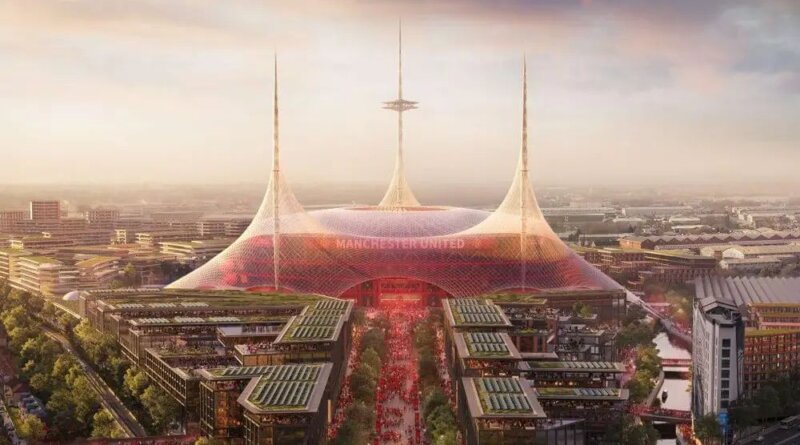Man Utd Revise Old Trafford Plans, Scrap Canopy Design
Manchester United’s Old Trafford redevelopment has taken a new turn, as the club walks back from its previously proposed canopy design. The original plans, which featured a striking three-pronged canopy enveloping the stadium, sparked considerable debate among supporters. Now, escalating land costs and acquisition difficulties have forced United to consider alternative approaches for their iconic home.
Old Trafford Redevelopment: From Vision to Reality
Manchester United’s ambitious vision for a new Old Trafford was first unveiled in March, promising a futuristic stadium that would not only increase capacity but also redefine the club’s architectural identity. Central to the plan was a unique canopy design, intended to provide an immersive matchday experience while making a bold statement on Manchester’s skyline.
However, challenges quickly emerged as the club attempted to secure additional land for the expanded stadium footprint. Recent reports suggest the cost of acquiring the necessary plots could be up to eight times higher than originally estimated. Faced with such an unexpected financial hurdle, United’s leadership has chosen to rethink the redevelopment strategy.
Land Acquisition Issues Force Rethink
The dramatic rise in land prices around Old Trafford has proven to be a significant stumbling block. Despite initial optimism, negotiations with local landowners have stalled, leaving the club with tough decisions to make. The inflated costs not only impact the feasibility of the canopy design but also threaten to delay the entire modernization project.
In light of these events, the canopy—already a source of division among fans—has been scrapped from the new proposals. Manchester United is now actively exploring more practical and cost-effective redevelopment options that will secure Old Trafford’s future without risking financial instability.
Fans React to the Abandoned Canopy Design
The original three-pronged canopy concept divided United’s passionate fanbase. While some supporters welcomed the bold vision and hoped for a stadium that matched Europe’s best, others felt the design strayed too far from the stadium’s heritage. The decision to drop the canopy has reignited conversations about tradition versus innovation at Old Trafford.
Many fans are relieved that the club is prioritizing financial responsibility and preserving the stadium’s iconic status over ambitious but potentially risky architectural experiments. Conversely, a vocal minority laments the loss of what could have been a transformative project for both the stadium and the city.
Manchester United’s Path Forward for Old Trafford
With the canopy design off the table, Manchester United is now focusing on alternative plans that balance modernization with heritage. These include internal renovations, enhanced hospitality areas, improved accessibility, and technology upgrades. The goal remains to create a world-class venue that serves supporters for generations to come.
Club officials have stressed their commitment to transparent communication throughout the ongoing process. Fans can expect further updates as United works with architects, stakeholders, and supporters to shape the next chapter of Old Trafford’s storied history.
Looking Ahead: The Impact on Premier League and Manchester
The redevelopment of Old Trafford is not just significant for Manchester United, but for the wider Premier League and the local community. A revitalized stadium would reinforce United’s status among football’s elite and contribute to the city’s economy. However, the current setback underscores the complexities of modern stadium projects, where tradition, innovation, and financial realities must all be balanced.
For more updates on Manchester United’s stadium plans and the latest in football, visit for more news.
Opinion: A Necessary Step for Sustainability
While some may view the abandonment of the canopy design as a missed opportunity, it reflects a pragmatic approach by the club’s leadership. In today’s football landscape, responsible financial management is crucial. By prioritizing sustainable development over architectural spectacle, Manchester United sets a positive example for other clubs facing similar challenges.
Your global gateway to nonstop football coverage:
News Goal
Share this content:
